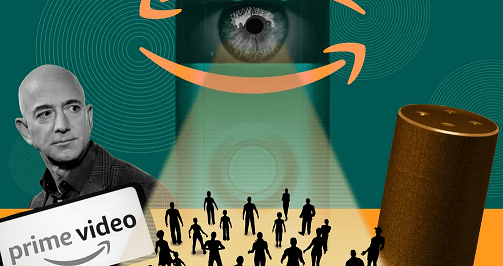Gavin Jordan is the publishing manager of Open Mic – The Drum’s self-publishing content marketing platform. For The Drum’s Content Marketing in Focus, he predicts the most likely content marketing trends for 2023, and how marketers can tackle them head-on.
In 1999, Jeff Cannon wrote, “In content marketing, content is created to provide consumers with the information they seek.”
Almost a quarter of a century on, it’s amazing how many content marketers still fall at this first hurdle. They provide information – yes – but it’s not information that anyone is actually looking for. It’s no doubt why 71% of decision-makers say that half or less of the thought-leadership content they consume offers any sort of valuable insights.
A lot of the time, the line between content that thrives and content that dives is relevance. Content marketers who look inwardly (What can I say about my business? Why is my product/service so valuable? What are the benefits of my offering?), will always lose out to those looking outwardly (What is the target audience interested in? What are they searching for? What do they want to engage with?).
One of the top ways to stay relevant with your target audience is to keep up with current industry trends (i.e. the topics that your audience are flocking to time and again). To help guide your content strategy next year, we’ve scoured through a trove of readership data to predict the most-likely content marketing trends for 2023. Here are our top five.
1. E-commerce
While there was an understandable growth in e-commerce vs brick and mortar sales in 2020 (largely due to the Covid-19 pandemic), e-commerce continues to grow at record speed. A recent report by Morgan Stanley predicts that e-commerce could reach 36% of all retail sales by 2026 (up from 32% now), as more shoppers prioritize convenience.
As e-commerce’s popularity rises, so too will competition between online retail brands. Retail marketers will therefore be watching this area closely to see how to stay ahead of the curve, and where the newest wave of growth will come from. But it’s not just retail marketers. The future of retail will affect media owners and tech providers alike – making it a critical topic to stay informed on from all angles.
What topics are likely to thrive? If the past few months are anything to go by, eagle-eyed marketers will be on the lookout for content that covers:
Buy into all the latest e-commerce marketing trends by bookmarking The Drum’s e-commerce hub here.
2. Metaverse and gaming
Most are familiar with the old marketing adage, “meet your audience where they’re at.” And if marketers are serious about reaching younger generations, then where they’re ‘at’ is the metaverse.
Mostly populated with Gen-Z and Gen-Alpha audiences, ‘metaverse’ is a catch-all term to define a virtual space where people meet, play, socialize, shop – and so on. But really, as Chris Sutcliffe says, the metaverse ultimately represents potential. To many, the virtual worlds (including, but not exclusive to, gaming worlds) that collectively make up ‘the metaverse’ are part of a shift from one era of the internet (Web2) to another (Web3). And no marketer wants to get left behind.
With some analysts predicting that the metaverse will grow into an $800bn market by 2024, and the number of gamers worldwide totalling a staggering 3.2 billion, good metaverse and gaming content will undoubtedly attract marketers’ attention in 2023. This year, readers not only flocked to content that provided an answer to what the metaverse means for the industry, but also how their own brand might succeed in the metaverse, taking especial note of how major brands like Nike and adidas developed their own (albeit very different) metaverse strategies.
In 2023, with a better understanding of what the metaverse means (or is likely to mean), brands will be looking for actionable advice on how to enter the metaverse/hone their metaverse strategies, as well as the marketing opportunities within these virtual worlds, be it in-game advertising, audio ad opportunities or by utilizing virtual influencer marketing.
To stay plugged-in with the latest metaverse & gaming news, trends and insights, bookmark The Drum’s Metaverse hub.
3. Data & privacy
Google announced earlier this year that they’re postponing the end of third-party cookies on Chrome until 2024, giving the industry more time to innovate for a privacy-centric, anti-tracking world. But despite all the delays, there’s no denying the inevitable: one day the cookie will crumble.
Mixed with Apple’s App Tracking Transparency (ATT) framework (which has been described as hypocritical by some), this will spell the end of collecting, measuring and utilizing audience data with relative ease. In 2023, marketers will be preparing to fill the cookie-shaped hole of the future, and content that helps them do this will reign king.
As well as how to obtain post-cookie data, marketers will also be looking closer at how to best analyze data. 76% of digital marketers evaluate their digital marketing using attribution models, but the so called “walled gardens” that govern these models are making it increasingly difficult for marketers to analyze the data effectively. In 2023, marketers will look to content that helps them overcome attribution challenges, or else provides a clear alternative.
Another opportunity in this space lies in providing genuinely enjoyable, engaging content. Because of its analytical – often jargon-heavy – nature, data & privacy can often be a dry subject to swallow. For content marketers to excel with this topic, content should be accessible, comprehensive and have personality. A lot of content might claim to have the best way to collect first-party data, for example, but it’s the most engaging of these that’ll get the most attention.
Track the latest data privacy news, trends and insights by bookmarking The Drum’s Data & Privacy hub here.
4. Audio
2022 saw a sharp rise in audience interest surrounding ad opportunities in the audio space. This should come as no surprise. With the almost unstoppable rise of podcast listeners, and the multitude of genres to meet their needs, brands have a new way to target niche audiences – and ensure they’re highly engaged. Marketers will be looking to understand how best to advertise on podcasts, how to ensure brand suitability and how to measure results. They may also look to understand how their own brand can utilize an effective podcast content strategy.
But podcasting isn’t the only space that audio can succeed in. With the boom in gamers worldwide, brands are not only using in-game advertising for visual ads – they’re looking to audio ads too. According to a study by AudioMob and YouGov, 75% of mobile gamers prefer audio ads over video. With arguably smoother integration, and less risk of interrupting gameplay, the growing opportunity of audio ads in gaming is likely to spark a lot of interest as we head into 2023 – as is the audio opportunity in the metaverse.
Keep your ears open to all the latest audio news, insights and thought-leadership by bookmarking The Drum’s Audio hub here.
5. Influencer marketing
The past few years have seen a huge shift in attitude towards influencers. The stereotype of the vacuous, Starbucks-sipping, fame-hungry narcissist is dead. Brands have finally come to recognize influencers for what they really are: publishers. And, like any publisher, they use content to build and maintain highly relevant and engaged audiences. For brands, that’s golden.
But influencer marketing is ultimately still in its infancy. For brands wanting to leverage it, there’s still a ton of education that can be supplied through content marketing. How do you find the right influencer? Should you go for one with broad appeal, or opt for a more niche micro-influencer? Do you choose paid content or branded content? What social media is most effective for using influencers?
But beyond these practical questions, marketers will be on the look out to see how influencer marketing continues to evolve. The rise of virtual influencers and live shopping have disrupted traditional notions of influencer marketing, and brands will be looking at thought-leadership closely to monitor these areas.
How to keep up with content marketing trends in 2023
At Open Mic, we keep all our members up to speed with the latest content marketing trends, so that they can target their audience with the right content at the right time. Find out more about how Open Mic can help your 2023 content strategy here.










